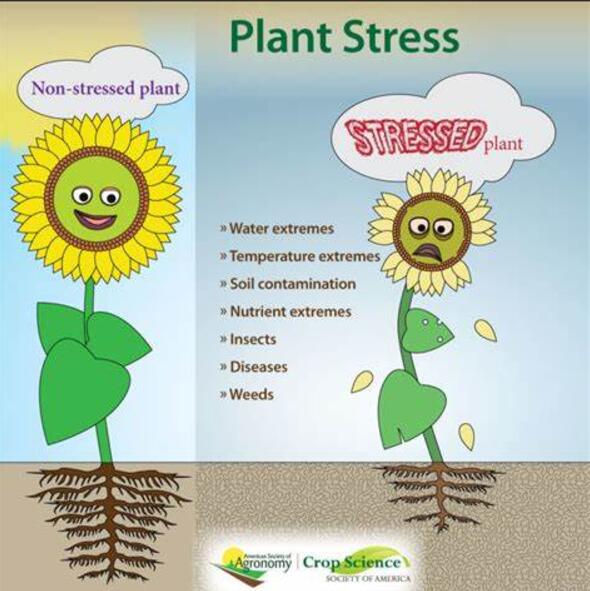Exploring the rice root metabolome to unveil key biomarkers under the stress of Meloidogyne graminicola
IF 6.8
Q1 PLANT SCIENCES
引用次数: 0
Abstract
Rice (Oryza sativa) is a highly significant cereal crop on a global scale. Crop plants usually respond to the biotic challenges with altered metabolic composition and physiological perturbations. We have deciphered altered metabolite composition, modulated metabolic pathways and identified metabolite biomarkers in M. graminicola-challenged susceptible rice variety HUR-917 using NMR (Nuclear magnetic resonance) mass spectrophotometry-based metabolomics. In this study, we conducted a comprehensive analysis of the metabolome of susceptible rice plants challenged with the pathogen M. graminicola to unravel complex metabolic changes, identify key biosynthetic pathways, and pinpoint metabolite biomarkers. Through statistical analysis, we identified 100 significant metabolites, with 48 upregulated and 52 downregulated metabolites at a fold change threshold of ≥ 2.0. Multivariate analyses, including Partial Least Squares Discriminant Analysis (PLS-DA) and Orthogonal Partial Least Squares Discriminant Analysis (OPLS-DA), revealed clear discrimination between control and treated samples, with high predictive ability for annotated discriminant metabolites. Pathway enrichment analysis unveiled prominent involvement of metabolic pathways such as nicotine and nicotinamide metabolism and valine, leucine, and isoleucine degradation. Furthermore, putatively annotated biomarkers identified through multivariate ROC curve analysis included metabolites like Thymol, Glycylproline, N-acetylglutamate, and Betaine, among others. These biomarkers, along with pathway enrichment results, underscored the intricate defense mechanisms employed by rice plants in response to M. graminicola infection. Notably, upregulated metabolites such as betaines, histamine, and 5-hydroxytryptophan were implicated in plant defense responses, while downregulated metabolites like thymol and N-acetylglutamate may contribute to increased susceptibility to nematode infection. Nicotinic acid downregulation is crucial in enhanced susceptibility of rice against M. graminicola. Pathway mapping highlighted the enrichment of crucial metabolic pathways involved in primary and secondary metabolism, emphasizing the shift from growth-related processes to defense-related responses like nicotine and nicotinamide metabolism under stress conditions. Overall, our findings provide valuable insights into the metabolic dynamics of rice plants during pathogen invasion, identifying potential biomarkers and elucidating key metabolic pathways involved in plant defense mechanisms. This research contributes to a deeper understanding of plant-nematode interactions and holds implications for the development of effective strategies for root knot management in rice cultivation.
探索水稻根部代谢组,揭示禾谷粉虱胁迫下的关键生物标志物
水稻(Oryza sativa)是全球范围内非常重要的谷类作物。作物植物通常通过改变代谢组成和生理扰动来应对生物挑战。我们利用基于 NMR(核磁共振)质谱光度法的代谢组学研究,破译了受禾谷镰刀菌侵染的易感水稻品种 HUR-917 的代谢物组成变化、代谢途径调节和代谢物生物标记物。在这项研究中,我们对受到病原体禾谷粉虱挑战的易感水稻植株的代谢组进行了全面分析,以揭示复杂的代谢变化,确定关键的生物合成途径,并找出代谢物生物标志物。通过统计分析,我们确定了 100 个重要的代谢物,其中 48 个上调代谢物和 52 个下调代谢物的折合变化阈值≥ 2.0。包括偏最小二乘法判别分析(PLS-DA)和正交偏最小二乘法判别分析(OPLS-DA)在内的多变量分析表明,对照样本和治疗样本之间有明显的区别,注释的判别代谢物具有很高的预测能力。途径富集分析揭示了烟碱和烟酰胺代谢以及缬氨酸、亮氨酸和异亮氨酸降解等代谢途径的显著参与。此外,通过多元 ROC 曲线分析确定的推测注释生物标志物包括百里酚、甘氨酰脯氨酸、N-乙酰谷氨酸和甜菜碱等代谢物。这些生物标志物以及通路富集的结果都强调了水稻植物在应对禾谷粉菌感染时所采用的错综复杂的防御机制。值得注意的是,上调的代谢物(如甜菜碱、组胺和 5-羟色氨酸)与植物的防御反应有关,而下调的代谢物(如百里酚和 N-乙酰谷氨酸)则可能导致对线虫感染的易感性增加。烟酸下调是水稻对禾谷线虫易感性增强的关键。通路图突出显示了参与初级和次级代谢的关键代谢通路的富集,强调了在胁迫条件下从与生长相关的过程转向与防御相关的反应,如烟碱和烟酰胺代谢。总之,我们的研究结果为了解病原体入侵期间水稻植物的代谢动态、确定潜在的生物标记物和阐明植物防御机制中的关键代谢途径提供了宝贵的见解。这项研究有助于加深对植物与线虫相互作用的理解,并对制定水稻种植中根结管理的有效策略具有重要意义。
本文章由计算机程序翻译,如有差异,请以英文原文为准。
求助全文
约1分钟内获得全文
求助全文
来源期刊

Plant Stress
PLANT SCIENCES-
CiteScore
5.20
自引率
8.00%
发文量
76
审稿时长
63 days
期刊介绍:
The journal Plant Stress deals with plant (or other photoautotrophs, such as algae, cyanobacteria and lichens) responses to abiotic and biotic stress factors that can result in limited growth and productivity. Such responses can be analyzed and described at a physiological, biochemical and molecular level. Experimental approaches/technologies aiming to improve growth and productivity with a potential for downstream validation under stress conditions will also be considered. Both fundamental and applied research manuscripts are welcome, provided that clear mechanistic hypotheses are made and descriptive approaches are avoided. In addition, high-quality review articles will also be considered, provided they follow a critical approach and stimulate thought for future research avenues.
Plant Stress welcomes high-quality manuscripts related (but not limited) to interactions between plants and:
Lack of water (drought) and excess (flooding),
Salinity stress,
Elevated temperature and/or low temperature (chilling and freezing),
Hypoxia and/or anoxia,
Mineral nutrient excess and/or deficiency,
Heavy metals and/or metalloids,
Plant priming (chemical, biological, physiological, nanomaterial, biostimulant) approaches for improved stress protection,
Viral, phytoplasma, bacterial and fungal plant-pathogen interactions.
The journal welcomes basic and applied research articles, as well as review articles and short communications. All submitted manuscripts will be subject to a thorough peer-reviewing process.
 求助内容:
求助内容: 应助结果提醒方式:
应助结果提醒方式:


